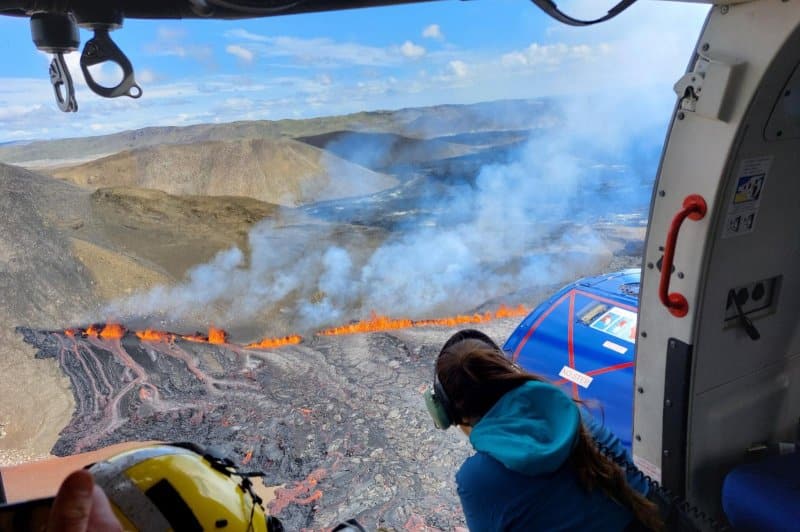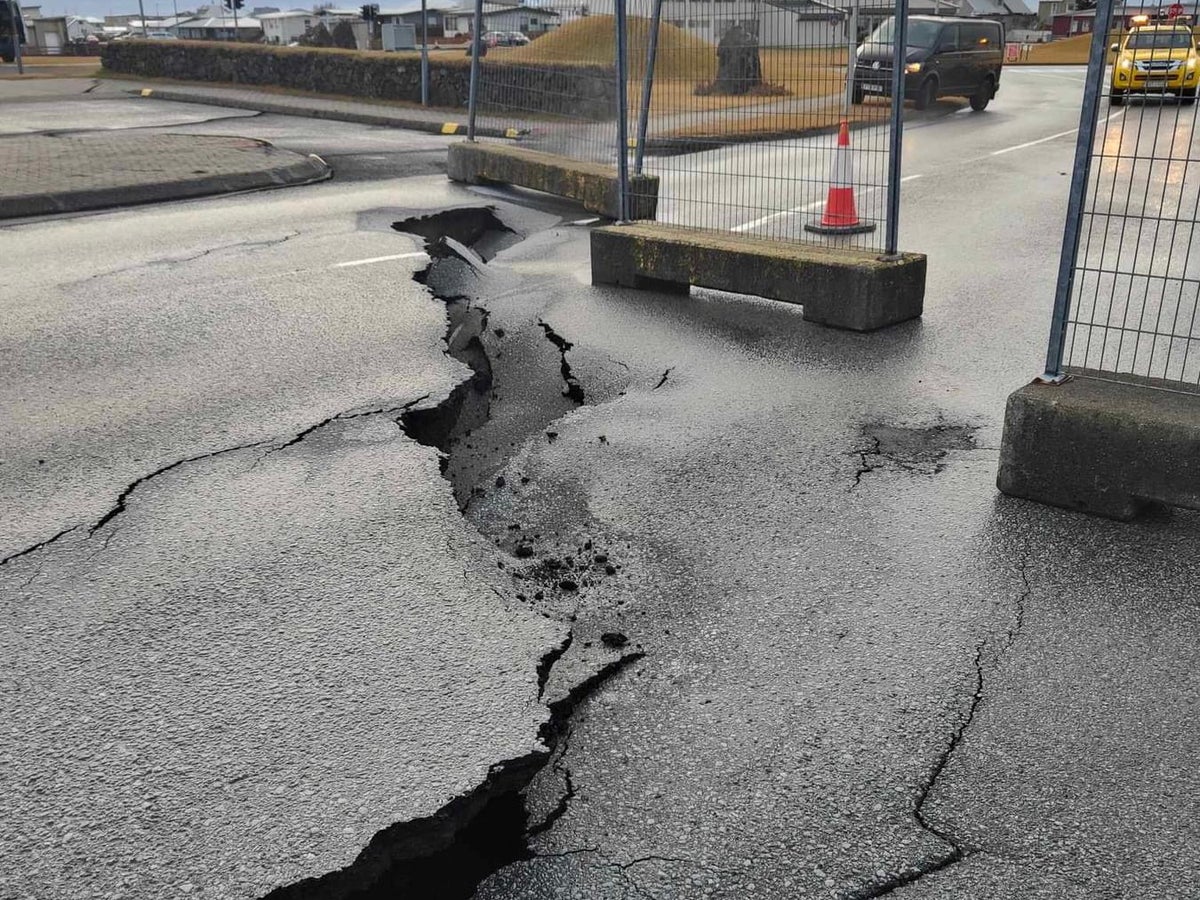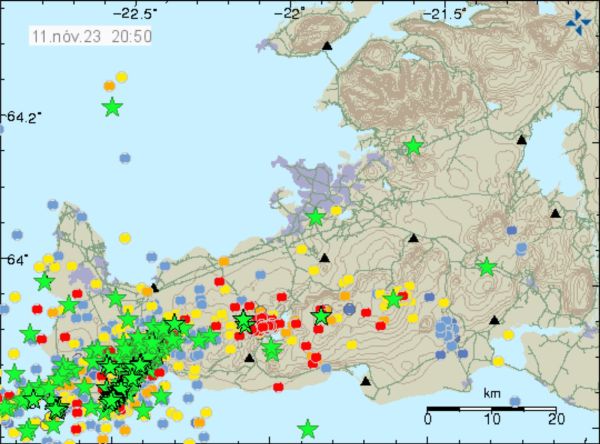Science
As Iceland Braces For A Potential Volcanic Eruption, What Is Likely To Happen And What Are The Risks?

Iceland has declared a state of emergency, and more than 3,000 residents have been asked to evacuate the small coastal town of Grindavk as authorities predict the eruption of a volcano in the country’s southwestern peninsula.
Scientists monitoring the situation, including those at Iceland’s Met Office, noticed changes on Sunday that may indicate “magma is moving closer to the surface” and concluded on Monday that “the greatest area of magma upwelling” is 3.5 kilometers (two miles) northeast of Grindavk.
So, what do we know about this prospective eruption, what are the hazards, how may it disrupt travel, and why is Iceland, a 103,000-square-kilometer (40,000-square-mile) island, seeing so much seismic activity?
Iceland is seeing occurrences that its 360,000 citizens “have not experienced before, at least not since the eruption in Vestmannaeyjar,” according to the country’s Civil Protection Agency, referring to a 1973 eruption that occurred without warning and destroyed 400 homes.
As Iceland Braces For A Potential Volcanic Eruption, What Is Likely To Happen And What Are The Risks?
According to the Civil Protection Agency, a 15-kilometer (nine-mile) long magma channel currently spans from just northwest of Grindavk into the Atlantic Ocean, based on models constructed from data collected in the area on Saturday.
Magma is a mixture of molten and semi-molten rock beneath the Earth’s surface that can trigger an eruption when it reaches the surface and transforms into lava.
Experts believe that if the lava erupts beneath the water, it will be more powerful than if it erupts on land. However, an explosion on land would pose a greater threat to Grindavk itself.
“It could become explosive if the magma interacts with sea water,” said Michele Paulatto, a research fellow at Imperial College London.
“If it erupts beneath the sea, it could cause a Surtseyan eruption similar to the one that occurred in Iceland in 1963, which created the island of Surtsey.” “Because that eruption lasted several years, this is a possibility,” he added.
In a statement, Bill McGuire, Professor Emeritus of Geophysical & Climate Hazards at University College London, stated there is “no reason, currently, to think that this eruption will be particularly large,” he added that “it is notoriously difficult to forecast how big an eruption will be.”
“The evacuated town of Grindavík is very close to the position of the new fracture, and its survival is far from assured,” he said. “Everything depends upon where magma eventually reaches the surface, but the situation doesn’t look good for the residents of the town.”
There is still a chance that the magma will never reach the surface. According to Dave McGarvie, a volcanologist at the University of Lancaster in the United Kingdom, “not all dikes breach the surface to form eruptions… perhaps only one out of every three or four.”
He said: “The best-case scenario is that this happens to the 15-km-long dike that has just formed, and that it simply cools and solidifies – and does not erupt.”
However, some of the repercussions of the earthquake activity are already visible. Roads in the area have been damaged by earthquakes, with the Icelandic road administration posting photographs on social media of disintegrating tarmac, broken pavements and gaping fissures in the road.
After experts stated they couldn’t rule out the possibility of a magma tunnel reaching Grindavk, the Civil Protection Agency evacuated the town on Friday night. However, some inhabitants were permitted back to one area under police supervision on Sunday to rescue pets and vital items.
The famous Blue Lagoon, a geothermal spa approximately seven kilometers (four miles) north of Grindavk that lures tourists to its steaming water, was closed as a precaution on Thursday.
“Toxic fumes are a real concern, the main being sulphur dioxide which can be corrosive and cause breathing problems,” he said. “It’s not something we need to worry about in the UK, but the local population and tourists can be affected depending on the prevailing wind direction.”
Is Reykjavik safe from the eruption?
Grindavk is located around 70 kilometers (43 miles) southwest of Reykjavik, Iceland’s capital city. Authorities have not issued an evacuation order for Reykjavik, implying that they believe the city will be unaffected by the eruption.
However, Keflavik, Iceland’s only international airport, is around 20 miles from Grindavk.
Experts do not expect a volcanic eruption to generate the same level of devastation as the Eyjafjallajökull volcano erupted in 2010 because it is unlikely to involve the glacial ice that resulted in a massive ash cloud.
As a result of the ash thrown out by the 2010 eruption, which threatened to stall aircraft engines and cause electrical failure, over 100,000 flights were canceled, affecting 2 million people.
“Eyjafjallajökull involved an eruption through or next to glacial ice that melted and provided water that made the eruption more explosive than it would have otherwise been, hence the high eruption plume and very wide ash dispersal,” said Lionel Wilson, Emeritus Professor of Earth & Planetary Sciences at Lancaster University.
“This should not have happened…As a result, they will just have to contend with weakly explosive lava fountains feeding lava flows.”
Volcanic eruptions are common in Iceland, albeit they usually occur in the wilderness, far from human areas. The Bárarbunga volcano system in the country’s center erupted in 2014, resulting in lava covering 84 square kilometers (32 square miles) of highland and causing no harm to any communities.
Why are there so many volcanos in Iceland?
For the first time in over 6,000 years, the Fagradalsfjall volcano system erupted in 2021. It also did not endanger populated areas and became a tourist attraction as people gathered to see a volcanic explosion.
Iceland is located on a tectonic plate boundary constantly splitting apart, pushing North America and Eurasia apart along the Mid-Atlantic Ridge. A massive mantle plume, hotter than the surrounding magma, rests beneath it, melting and thinning the Earth’s crust. Because of these characteristics, Iceland is home to 32 active volcanoes.
Source – (CNN)






































